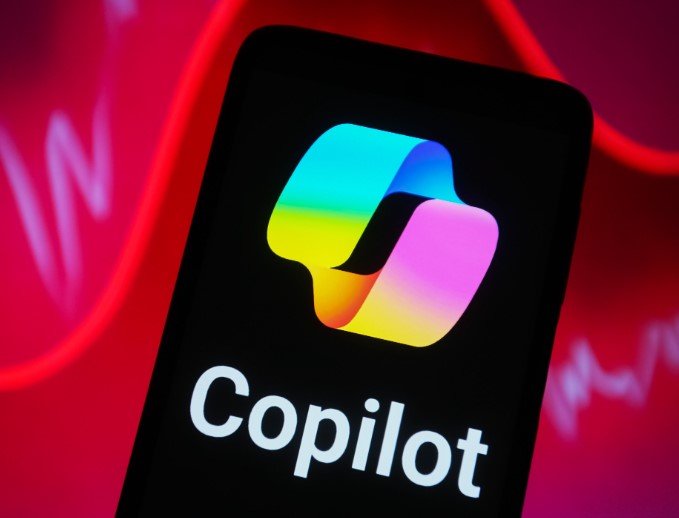Microsoft has taken another big swing at the creative AI market, launching Copilot 3D — a tool that can spin a flat photo into a textured, navigable 3D model in mere seconds. The move comes less than 24 hours after the company rolled out GPT-5-powered Smart Mode inside Copilot, underscoring just how fast it’s pushing new AI features into users’ hands.
From Static Images to Interactive Shapes
For years, turning a picture into a 3D object was the sort of thing that required pricey software, plenty of time, and usually a crash course in computer graphics. Now, Microsoft says, you can upload a regular PNG or JPG file — under 10MB — hit a button, and watch the AI do the heavy lifting in under a minute.
It’s part of Copilot Labs, the company’s experimental playground for AI ideas. And while the tech might sound niche, Microsoft is aiming squarely at students, designers, and rapid-prototyping tinkerers who might not have the patience or skills for Blender, Maya, or CAD tools.
The final output comes as a GLB file, a standard format that works in most 3D viewers, design programs, and game engines. In other words: you can plug it into a classroom AR app, drop it into a Unity project, or send it to a 3D printer.
A Free Taste, for Now
Copilot 3D isn’t being thrown wide open yet. Right now it’s free, but only for a slice of users who sign in with a Microsoft or Google account. That limited rollout mirrors how Microsoft has tested other Copilot features — gauge interest, stress-test the tech, then scale up.
Company documentation makes clear the intent: make 3D modelling “fast, accessible and intuitive.” In practice, that means removing most of the knobs and sliders that intimidate newcomers. You pick an image, you click “Create,” and you wait. There’s no manual mesh tweaking, no UV unwrapping, and no shader scripts to write.
One small note buried in the instructions: “complex subjects like animals may yield imperfect results.” Translation: if you feed it a photo of your dog, don’t expect Pixar quality — yet.
Why This Matters for Microsoft
The launch isn’t happening in a vacuum. Big tech firms are racing to push AI deeper into creative tools, hoping to lock in professional and casual users before rivals do. Adobe has its Firefly models embedded in Photoshop and Illustrator. Google has been experimenting with image-to-3D in its Labs projects. Even smaller startups like Luma AI and Kaedim are chipping away at the 3D creation problem.

For Microsoft, Copilot 3D could be a bridge between AI-assisted ideation and full-on production work. Imagine an industrial designer roughing out a concept for a new chair: instead of sketching it by hand or wrestling with a modelling app, they could snap a photo of a similar piece, feed it to Copilot, and get a 3D base to work from in minutes.
The company is also leaning on the goodwill from last week’s GPT-5 Smart Mode reveal, which made Copilot better at multi-step reasoning and problem-solving. Copilot 3D builds on that narrative: Microsoft’s AI isn’t just chatty — it can create tangible assets.
Early Impressions From Testers
Technology site The Verge tested the tool ahead of launch, noting that it handles everyday objects — furniture, mugs, umbrellas, even bananas — surprisingly well. The shapes are smooth, the textures believable, and the scale accurate enough for quick prototyping.
Where it stumbles is in organic complexity. Animals, plants, and intricate mechanical parts tend to produce odd geometry or smeared textures. That’s not entirely surprising; 3D reconstruction from a single photo is a notoriously hard problem in computer vision.
Still, for its intended uses — concept testing, educational demos, and rough drafts — the quality seems more than serviceable.
Potential Use Cases Already Emerging
Educators are among the first to get excited. A high school art teacher in Seattle who got early access said she used Copilot 3D to turn student-drawn object sketches into 3D models they could explore in VR headsets. “It’s a different way of thinking about form and space,” she said. “Kids who aren’t confident in drawing suddenly light up when they can walk around their design.”
Indie game developers see another angle: creating placeholder assets without outsourcing or trawling free asset libraries. For small studios, time saved is money saved.
Some practical uses users are floating online include:
-
Rapidly building virtual showroom items for e-commerce.
-
Generating teaching aids for science and engineering classes.
-
Speeding up architectural concept mock-ups.
The Competitive Landscape
Microsoft isn’t first here, and it won’t be alone for long. Tools like Luma AI already let iPhone users scan objects and turn them into 3D models. Kaedim and Scenario cater to game developers with AI-generated assets. But Copilot 3D’s potential advantage lies in its ecosystem — it’s a short hop from a model in Copilot to a PowerPoint demo, a Mesh for Teams meeting, or an Xbox game prototype.
Analysts also point out the psychological factor: “People trust Microsoft to keep things around,” says Ananya Mehra, a Bangalore-based tech consultant. “If you invest time learning Copilot 3D, you’re not worried it’ll vanish in six months like some startup app.”
That said, power users may still prefer traditional tools or more advanced AI solutions that offer higher fidelity and control.
Looking Ahead
Microsoft hasn’t committed to a full public release date or pricing. Given its track record, the current free tier may eventually give way to a premium option inside Copilot Pro. If adoption is strong, the company could integrate it directly into Windows or Office, making 3D model creation a native feature for millions.
For now, Copilot 3D is another sign that the AI race isn’t slowing down — and that creativity, not just productivity, is the next big battlefield.
